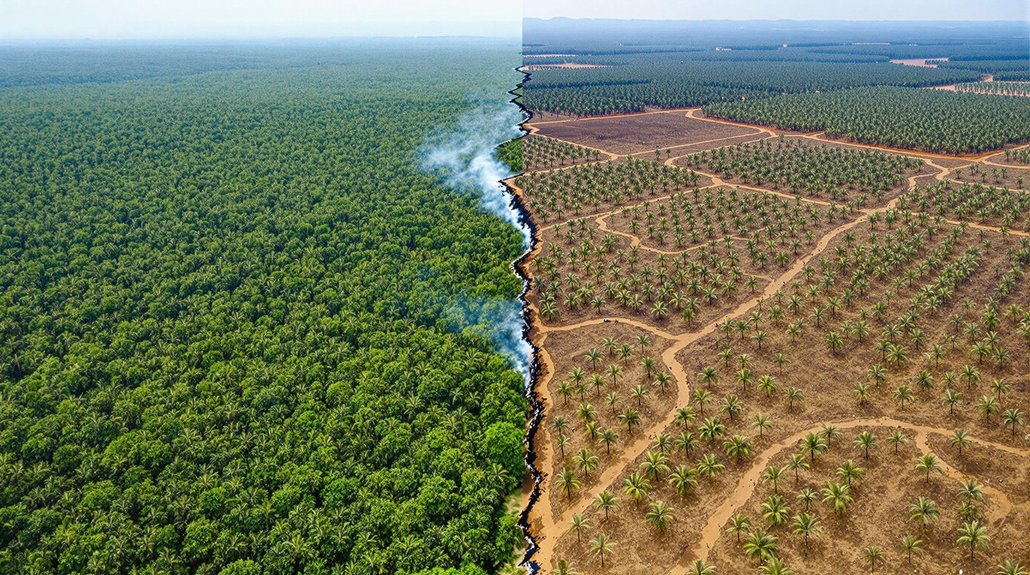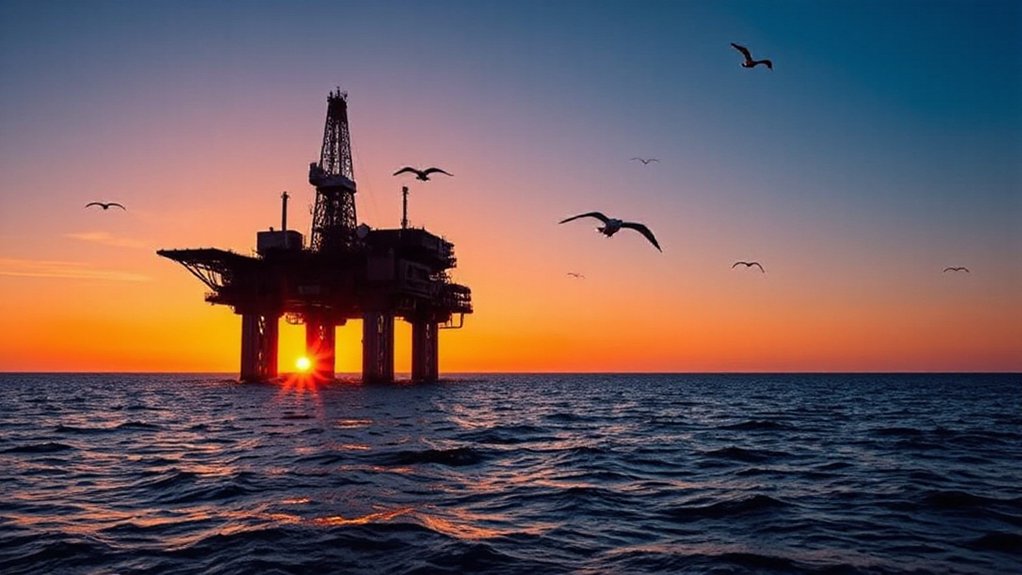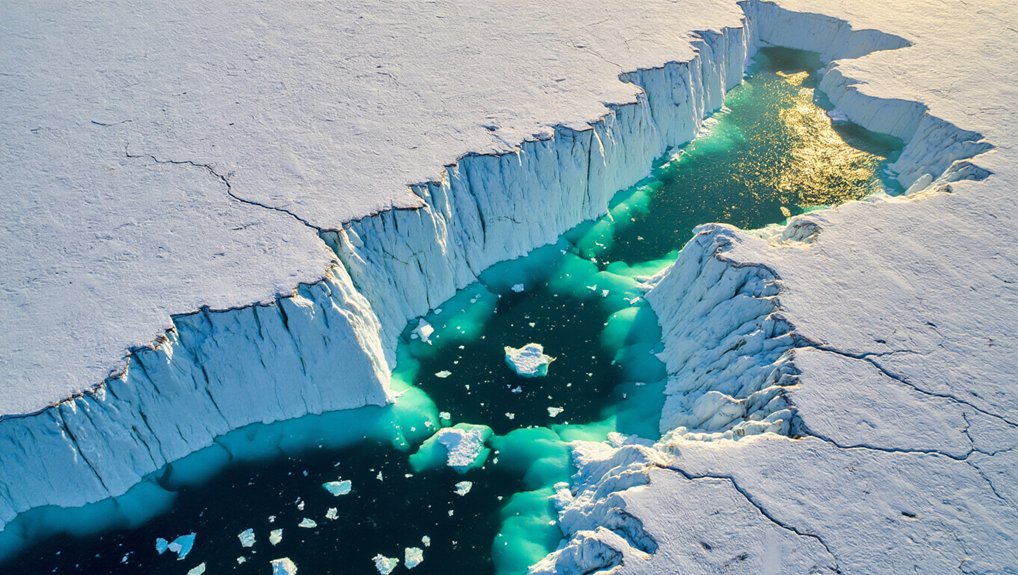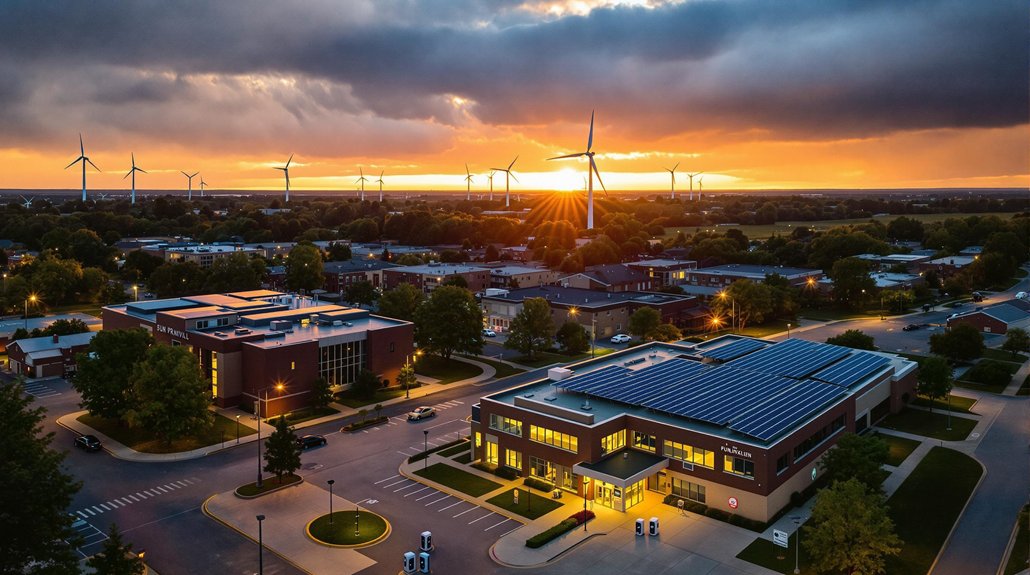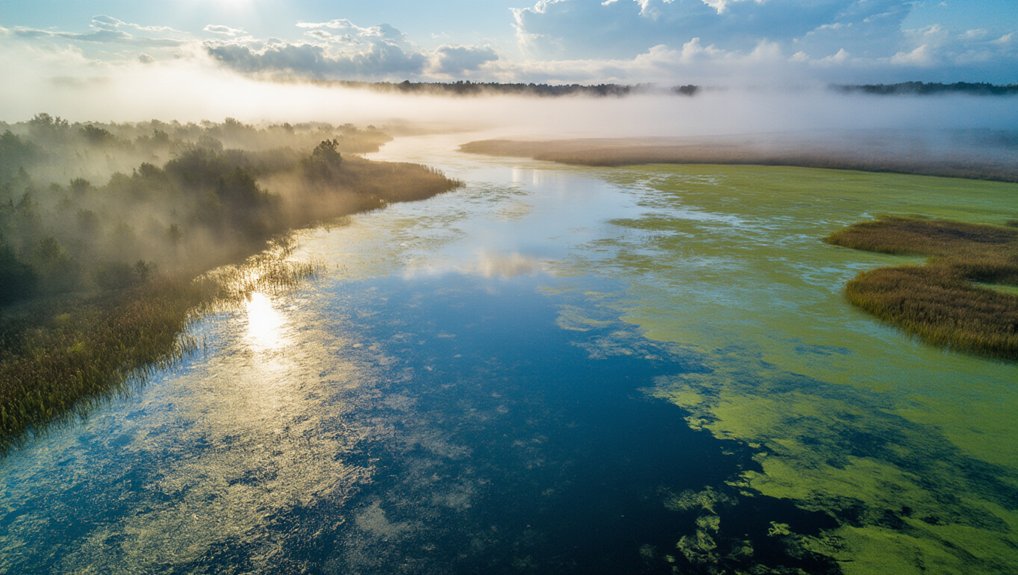Many consumers don’t know that “green” diesel isn’t always eco-friendly. Recent studies show that crops used for biofuels often lead to massive forest clearing. Palm oil and soy production have destroyed millions of acres of rainforest, pushing endangered species toward extinction. Indigenous communities lose their homes, while billions of tons of carbon dioxide enter the atmosphere. The environmental damage raises a troubling question: Is this alternative fuel actually worse than what it’s replacing?
While green diesel is often promoted as an environmentally friendly fuel alternative, its production is increasingly linked to devastating deforestation across the globe. Studies show that current biofuel policies could cause 7 million hectares of forest loss by 2030, an area larger than West Virginia. This destruction is happening primarily to make way for palm oil and soy crops, two major ingredients in so-called “green” diesel.
The European Union ranks as the second-largest importer of palm oil worldwide, with over half being used for green diesel production. This demand drives deforestation in Indonesia, where ancient forests are rapidly being cleared for plantations. Likewise, Argentina’s Chaco region faces severe forest loss as soy plantations expand to meet biodiesel demand.
Contrary to their eco-friendly image, these biofuels often harm the environment more than they help. Palm oil biodiesel produces three times more climate pollution than conventional diesel when accounting for deforestation. Soy biodiesel is twice as harmful. The numbers are staggering – biofuel-related deforestation could release 11.5 billion tons of carbon dioxide, exceeding China’s annual fossil fuel emissions. Unlike renewable energy sources that can create habitats for diverse species, these biofuel plantations result in ecosystem services loss worth billions of dollars annually.
The “green” in green diesel masks a brutal reality: these fuels can generate more pollution than they replace when forests fall.
Beyond climate impacts, biodiversity suffers tremendously. Endangered species like orangutans and Sumatran elephants lose critical habitat as forests fall. Wildlife migration patterns are disrupted, and unique ecosystems are replaced with monoculture plantations that support far fewer species.
The human toll is equally concerning. Indigenous communities face displacement as companies claim land for biofuel crops. Workers on these plantations often experience poor conditions and rights violations. Nearby communities suffer from increased pesticide exposure, which contaminates water supplies and causes health problems.
Particularly troubling is the conversion of peatlands for plantations. These carbon-rich wetlands can release massive amounts of greenhouse gases when drained. Experts estimate 3.6 million hectares of peatlands may be destroyed for biofuel crops, further accelerating climate change. While the EU plans to gradually reduce support for palm oil diesel starting in 2023, many policy loopholes still allow continued deforestation.
California’s situation mirrors this global crisis as the industry transitions from waste-based sources to crop-based oils like soybean and canola, diminishing the environmental benefits of renewable diesel.
While labeled “green,” the environmental cost of this fuel reveals a much darker reality.
